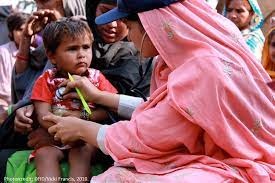The Maternal Mortality Rate (MMR) of a nation is a conclusive indicator of its health and development status. Asia has the highest rate of maternal death and numerous South Asian countries including Pakistan, have an even higher rate. According to the most recent statistics, almost 295,000 women die worldwide each year during and after childbirth. Nearly one-fifth of these fatalities are attributed to South Asia alone. It is absolutely disheartening to know that the underdeveloped nations account for around 94 percent of the maternal deaths. The National Institute of Population Studies (NIPS), has conducted the most recent comprehensive survey called the “Pakistan Maternal Mortality Survey 2019” that reveals significant demographic differences in maternal mortality rates among women living in rural and urban areas of Pakistan. The survey revealed that in Pakistan, the maternal mortality ratio is 186 deaths per 100,000 live births.
According to this survey, the country’s maternal mortality rate has decreased from 276 deaths to an average of 186 deaths per 100,000 live births as a result of the general improvement in health care services during the past ten years. It is also encouraging to learn from the survey that as a result of increased awareness and willingness, a higher proportion of pregnant women are receiving medical attention specific to their conditions. However, the provincial breakdown of maternal death rates irrefutably indicate this improvement is certainly not consistent across the whole country.
The despaired and inconsistent health care services throughout the country has adversely affected the mothers and their fetuses. According to the latest Pakistan Maternal Mortality Survey; Sindh has 224 maternal deaths per 100,000 as compared to 157 deaths in Punjab, 165 deaths in KP and 298 maternal deaths in Baluchistan. Azad Jammu & Kashmir has the lowest MMR in the nation with 104 deaths, while Gilgit-Baltistan has an MMR of 157. According to this data, Sindh and Balochistan are in desperate need of improvements and enhanced delivery of services, while the medical services and especially women’s access to them may have improved in Punjab and KP, resulting in a fall in the overall maternal mortality rate. The corresponding results of the survey also indicate the differences in health services between urban and rural locations.
It is pertinent to note that maternal health is not only related to the woman but to her children and family as well. Children can only be healthy if their mother is healthy, and then can grow up to their full potential ultimately becoming a valuable resource for a nation’s future human capital. In addition to assisting Pakistan in achieving the SDGs by 2030, the aforementioned interventions and more such initiatives/programs will also help the nation score higher in the human development index.
Up until 2015, the United Nations’ Millennium Development Goals (MDGs) gave the Maternal Mortality Ratio (MMR) great emphasis. Under the second Sustainable Development Goals (SGDs) the UN has set for 2030, it is once again given top priority. However, Pakistan is currently lagging significantly behind in reaching Sustainable Development Goals (SDGs) after the failure of the Millennium Development Goals (MDGs). A number of systematic and social factors account for the high rate of maternal mortality in rural areas of Pakistan as the ratio is about 26 p higher in rural areas than urban areas.
Highlighting the province of Sindh is very important because despite being the country’s second largest province, it lags behind others in terms of socio-economic conditions. Although it undoubtedly makes massive contributions in the country’s economy yet it is confronted by various issues and has a fragile regulatory framework. Women’s health in Sindh is at a high risk due to the high number of pregnancies every year, lack of family planning and inaccessibility to satisfactory healthcare services. The National Nutrition Survey 2011 revealed that 24.6 percent pregnant women in Sindh suffered from iron deficiency or anemia. Almost 49.5 percent pregnant women have Vitamin A deficiency and 44.6 percent had zinc deficiency. They suffer from severe physical weaknesses, lack a support system, live in poverty, do not have regular hospital visits, no proper diet, but have a workload which just makes this pregnancy pain unbearable for them since their bodies are biologically not fit for it. Majority are underage at the time of delivery and their fetuses are born underweight as well. This is a persistent and significant social problem since the society is made up of both males and females and when the females’ health is so neglected then the society is bound to collapse.
In order to improve the overall maternal health in Pakistan’s rural areas, inclusive national policies must be implemented so that the rural population can also avail the healthcare facilities, gender-based inequalities must be eliminated, the healthcare infrastructure needs to be reevaluated and the budget allocation in the health sector must increase, family planning programmes must be effectively implemented, and accountability must be maintained. In addition to this, the federal government and the provinces ought to work together to advance resource allocation that balances health with economic development, putting women’s reproductive health first and increasing funding for maternal and child healthcare initiatives is crucial, funding for women’s education and awareness programmes to reduce societal causes of maternal mortality and morbidity in rural areas is again the need of time and to comprehensively address the issue, a unique and joint development initiative must be created with the help of communities, NGOs, and government agencies.
It is pertinent to note that maternal health is not only related to the woman but to her children and family as well. Children can only be healthy if their mother is healthy, and then can grow up to their full potential ultimately becoming a valuable resource for a nation’s future human capital. In addition to assisting Pakistan in achieving the SDGs by 2030, the aforementioned interventions and more such initiatives/programs will also help the nation score higher in the human development index.























